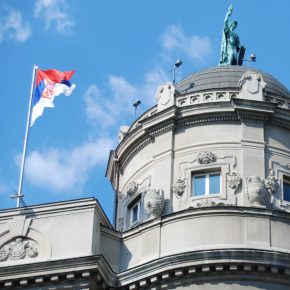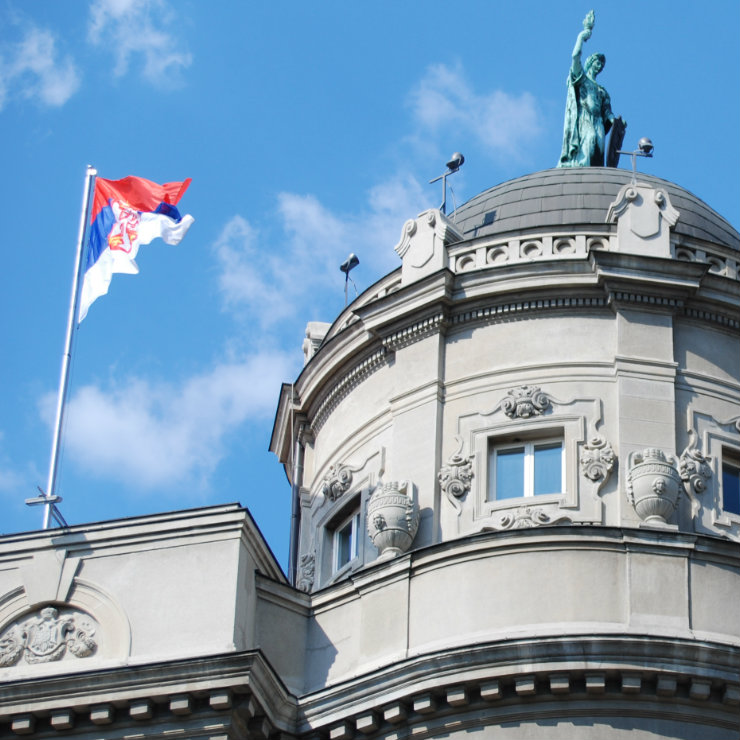
Belgrade, Serbia (Nurettin Mert AYDIN, CC BY-NC-ND)
Serbia completed the three-year loan program with the IMF successfully, however, according to the IMF, it is still necessary to work hard to improve “business climate and infrastructure in order to catch up with Western European countries.” According to James Roaf, the head of the IMF mission for Serbia, the program did much better than it had been expected, as it managed to overperform many macroeconomic goals. “Serbia is back on the road to recovery,” he stated.
Media in Serbia gave a warm welcome to these claims. The IMF’s Executive Board claims that “Serbia has made significant progress through the economic program supported by the IMF,” which the national news agency Tanjug called “the economic outperformance.”
As the new arrangement with the IMF is not to be financial, it could be said that it represents some kind of a turning point in Serbian monetary policy, so it’s possible to give an overview of what has been achieved so far.
If we take the macroeconomic mandate into account, Serbia has made significant progress – state finances have achieved balance (read more). Boško Mijatović, an economic analyst, has emphasized that such achievement should be seen as a part of the discussion about the IMF fundamental concepts. According to Mijatović, for the last couple of years, it has been thought that a major deficit decrease could lead to a decline in GDP. Thus, state finance consolidation can be considered the affirmation of one of the major IMF postulates.
On the other hand, even though some economic growth has been achieved with a significant deficit decrease, it is still very slow. In fact, this is the lowest economic growth rate in the region, which, according to the estimates of the IMF, was 2 per cent (according to the estimates of the Statistical Office of the Republic of Serbia, it was 1.9 per cent). As for 2018, the IMF predicted a growth rate of 3.5 per cent, which is lower than the average growth rate in Eastern Europe.
Such a low rate of the economic growth is surprising, given that the economic trends of the European Union (EU) are favorable – there has been an increase in the demand, which is supposed to stimulate the growth in the EU itself, while loan movements are fairly favorable, too. Clearly, what needs to be done is to come to certain structural solutions and implement systemic reforms beyond financial consolidation.
When it comes to the employment growth, which is said to be one of the great achievements of the last arrangement with the IMF, things are rather vague. There are different interpretations of this statistical indicator: the Fiscal Council finds it impossible for the employment growth to be so high when the GDP growth in Serbia is relatively low; on the other hand, the Statistical Office of the Republic of Serbia believes that the non-standard forms of employment (temporary, part-time, and other employment arrangements) contributed to the overall employment growth (read more). According to the aforementioned analysis by Boško Mijatović, it is clear that, regardless of the numerical indicators, the quality of employment decreases – the employment growth during the economic stagnation indicates low productivity.
Furthermore, there’s a question of how stable Serbian international economic position is. Due to the low loan costs on the international financial market, there has been a foreign capital inflow. However, the foreign trade deficit in Serbia is still far from negligible. In case the capital price rises, i.e., in case the short-term inflow of foreign investments ceases, Serbian balance of payments will suffer.
In short, there has been some progress, but it is not as significant as the optimistic estimates suggest. In addition, the IMF also notes certain risks to the Serbian economy. There is a possibility that reformed public enterprises may encounter new financial obligations, especially if the price of some raw materials on the world market rises. It is also questionable whether the government, satisfied with consolidation, will introduce further systemic reforms and what political and social resistance it might encounter along the way. Plus, the short-term decline of fiscal discipline can seriously jeopardize future economic growth. Serbian economy is highly dependent on regional opportunities, and potential instability in the market can strongly affect Serbian opportunities.
Here’s what the IMF has suggested and will probably continue to do so in the future: tax reforms, maintaining fiscal balance, state-owned enterprise restructuring or privatization (which refers to the remaining state-owned banks and insurance companies, as well), together with the emphasis on broader use of the RSD instead of the EUR, systemic reforms, and greater investments in the infrastructure.
It is interesting to note that it is not just the case that the Serbian government hopes for favorable estimates by the IMF. The International Monetary Fund alone aspires to “note down” some successful undertaking, given the criticism it receives all around the world, as well as subsequent narrowing of the scope of impact to developing countries and Europe. The IMF strives to reward the co-operation of the government, but also to strengthen the postulates of its action.


